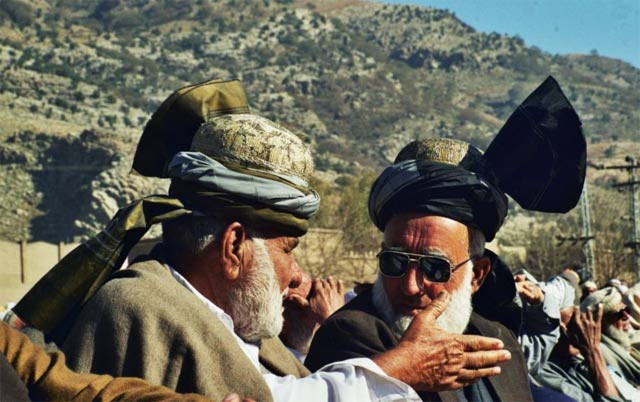Analysis: How ready is K-P for merger with FATA
The biggest challenge perhaps will be to synchronise Fata’s justice system with K-P’s

The biggest challenge perhaps will be to synchronise Fata’s justice system with K-P’s. PHOTO COURTESY: MAJEED BABAR
“The cabinet’s decision is only the beginning of a ponderous task,” a senior official involved in drafting the legal and administrative framework for the future of the tribal areas told The Express Tribune.
“What is important to understand is that the legislation requires financial resources, without which the reforms are a hollow shell,” he said. The most important component is the justice system and an estimated 30% of the reforms requires no finances and involves administrative adjustments, according to him.
FATA to be merged with K-P
“Synchronisation is the key here,” he said. “Apparently, it takes 30 minutes to merge certain government departments of the K-P and Fata, but this can be done only in parallel departments like education, health and others, whose working force is already from the K-P,” he added.
Fata, however, is ruled by a loosely knit judicial system that works under the framework of the Frontier Crimes Regulation (FCR) 1901 that has been amended on several occasions to be made relevant. However, the judiciary and the executive have never been separated.
Officials say the Tribal Areas Rewaj Act (Tara) which has been renamed thrice – from the Nizam-e-Adal Act to Good Governance Act to Tribal Areas Rewaj Act – and which will be implemented as a regulation is to substitute the current system.
This proposed law has been criticised for giving legal cover to the Jirga. “It might be a bad law but at least a law nonetheless,” said one of the federal lawmakers who drafted it.
“There is no judicial infrastructure in Fata,” said another senior official dealing with Fata’s security component. He said the justice system has five pillars – law enforcement, prosecution, defense attorneys, courts, and corrections.
“However, none of the five pillars of the justice system properly exist in Fata and therefore, this area cannot be synchronised with the justice system of the K-P,” he said.
He said Fata has depended for security on Levies and Khasadars, who are both untrained and inexperienced. As civil armed forces, Fata currently has 11,789 Levies in its seven agencies and six frontier regions and 18,600 Khasadars with no supervisory structure for an area smaller than Malakand.
“The Fata reforms suggest an additional recruitment of 20,000 personnel for security. That will bring the Levies’ strength to almost 31,000. However, in comparison there are only 9,000 policemen in Malakand division,” said the official, asking: “What will we do with such a surplus force?
Federal cabinet approves FATA's merger with K-P, repeal of FCR
He said the five-year transition is to have a time window to allow the K-P police to train them, adding that the post-merger security plan maps out 75 police stations in Fata, initially.
Meanwhile, a working committee of the K-P government has been silently preparing for the merger. The draft of the local government (LG) act for Fata which was written in view of the Punjab LG Act is being amended in the K-P’s LG department.
“By holding elections and bringing the tribes people within the ambit of the province, we are making history,” said an official, adding that “once that happens there will be no looking back.”
He said on the instruction of the PTI chief’s Imran Khan’s, the K-P Chief Minister Pervez Khattak will be lobbying with the chief ministers of other provinces for the proposed 3% National Financial Commission (NFC) award for Fata. “We’ve done our homework but this will be a bumpy ride,” said the senior government functionary.
The reforms package not only deals with development but aims to equalise the presence of troops on both the Eastern and Western borders. “The merger should also settle the issue of the Durand Line once and for all. It’s a landmark achievement that will end terror through development,” said a security official.
Published in The Express Tribune, March 3rd, 2017.













COMMENTS
Comments are moderated and generally will be posted if they are on-topic and not abusive.
For more information, please see our Comments FAQ